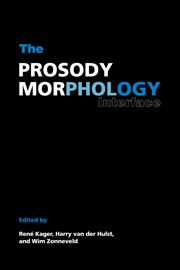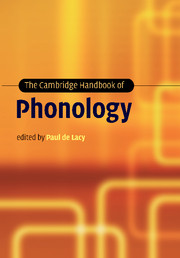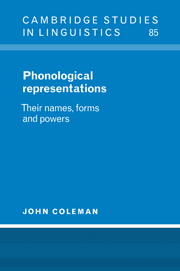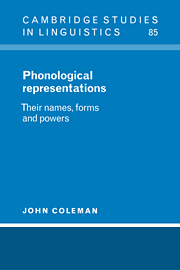The Prosody-Morphology Interface
In many languages, word formation is restricted by principles of prosody that organize speech sounds into larger units such as the syllable. Written by an international team of leading linguists in the field of prosodic morphology, this book examines a range of key issues in the interaction of word formation and prosody. It provides an explanation for nonconcatenative morphology that occurs in different forms (such as reduplication) in many languages, by an interaction of independent general principles of prosodic and morphological well-formedness.
- Exciting area of linguistic (phonology and morphology) interface
- Rapidly developing field
- Unusually broad range of empirical material
Product details
March 2011Adobe eBook Reader
9780511838491
0 pages
0kg
This ISBN is for an eBook version which is distributed on our behalf by a third party.
Table of Contents
- Contributors
- Preface
- 1. Introduction René Kager and Wim Zonneveld
- 2. On the moraic representation of underlying geminates: evidence from prosodic morphology Stuart Davis
- 3. Verbal reduplication in three Bantu languages Laura J. Downing
- 4. Prosodic morphology and tone: the case of Chichewa Larry M. Hyman and Al Mtenje
- 5. Exceptional stress-attracting suffixes in Turkish: representations versus the grammar Sharon Inkelas
- 6. Realignment Junko Itô and Armin Mester
- 7. Faithfulness and identity in prosodic morphology John J. McCarthy and Alan S. Prince
- 8. Austronesian nasal substitution and other ṆC effects Joe Pater
- 9. The prosodic base of the Hausa plural Sam Rosenthall
- 10. Prosodic optimality and prefixation in Polish Graźyna Rowicka
- 11. Double reduplications in parallel Suzanne Urbanczyk
- Index of subject
- Index of constraints
- Index of language
- Index of names.








